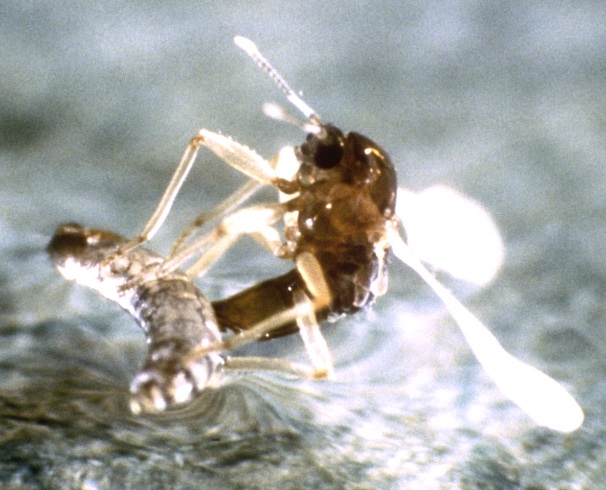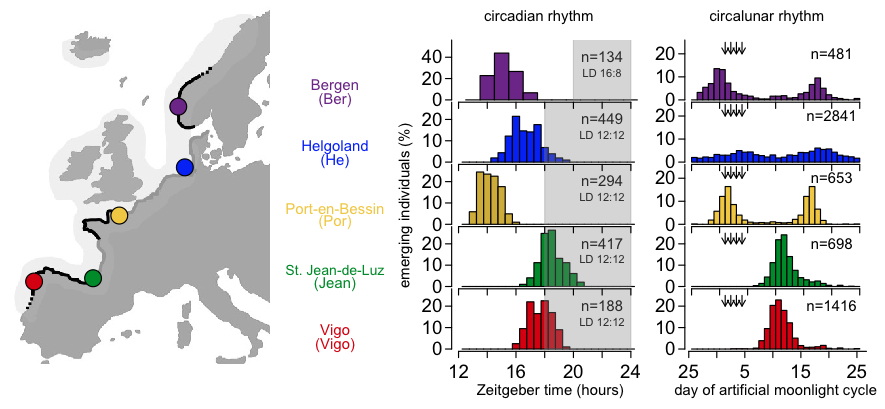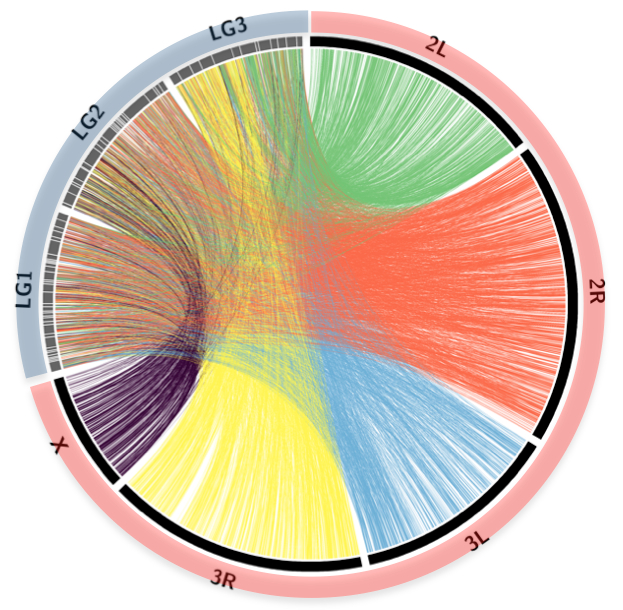Why do we need the Clunio marinus reference genome?

A model for studying circalunar clocks
The marine midge Clunio marinus (Diptera: Chironomidae) is found in the rocky intertidal zone of the European Atlantic coast. In adaptation to its marine habitat, the midge has synchronised its life cycle with the rhythm of the tides. Adults live only for a few hours and adult emergence and reproduction take place when the water is as low as possible. These occasions recur predictably during the low tides of spring tide days, short after new moon and full moon. Hence, development of Clunio marinus is tightly regulated so that adults are only present during a few days around the spring tides, resulting in a lunar rhythm of adult emergence. Additionally, daily emergence time is controlled by a circadian clock, ensuring the midges only emerge short before the time of low tide.
In the laboratory, the lunar rhythm of adult emergence continues for several months in the absence of any timing cues, underlining that it is controlled by an endogenous timekeeping mechanism – the circalunar clock. Circalunar clocks are found in many marine organisms, but their molecular basis is still completely unknown. The basic properties of Clunio marinus’ circalunar clock, e.g. its response to moonlight stimuli and tidal stimuli, have been unraveled during the 1960s to 1990 by Dietrich Neumann in now classical behavioural experiments. The Clunio marinus reference genome finally opens the door to advance these studies at the molecular level, aiming to identify the first molecular components of the circalunar clock.

A model for the evolutionary processes underlying local adaptation
While the pattern of the tides is highly regular at a given geographic location, it differs tremendously between geograpic locations along the coastline. Different local populations of Clunio marinus display a vast variety of genetic adaptations in the timing of their lunar and daily rhythms, and also in the sensitivity of their circalunar clock to external timing cues.
Population genetic studies suggest that most of the timing adaptations have evolved after the last ice age, i.e. within less than 20,000 years. The Clunio marinus reference genome greatly enhances the possibilities to study the evolutionary forces and processes shaping these adaptations. Evolutionary and functional studies go hand in hand: Identifying the genes underlying local adaptations highlights molecular components of the circalunar clock. In turn, knowing the molecular mechanisms of the circadian and circalunar clocks helps to understand the evolutionary processes by which these clocks adapt to their environment.

A resource for comparative genomics
The Clunio marinus genome is the only chironomid genome assembled and mapped to a degree that allows a full reconstruction of the chromosomes. After drosophilid flies and mosquitoes, this makes the chironomids the third subfamily of dipeterans for which genome wide synteny comparisons are possible. Beyond that, the Clunio marinus reference genome enables comparative investigations on many other interesting features of chironomids - for example their small genome size, the high incidence of genomic rearrangements or the lack of differentiated sex chromosomes and the occurence of multiple co-existing sex determining loci.
